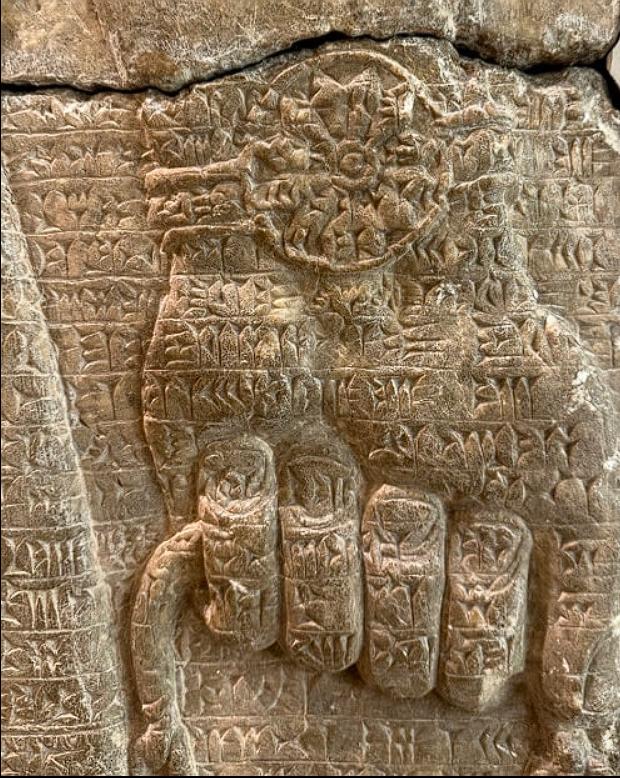The Winged Protector: A Symbol of Divine Power from Ashurnasirpal II’s Palace
An ancient Assyrian relief from the Northwest Palace of Ashurnasirpal II (883–859 BCE) has made its way to the Walters Art Museum in Baltimore, offering an exceptional glimpse into the grandeur of Assyrian royal iconography. Carved from gypsum nearly three millennia ago, the relief once formed part of a narrative frieze in Nimrud, Ashurnasirpal’s imperial capital, where it stood as a powerful visual declaration of divine favor and state power.
A Protector’s Role in Assyrian Statecraft
The figure in the relief is a winged protector, poised mid‑stride, holding a ritual bucket in one hand and a stylized pinecone in the other. These two objects were far more than decorative; they had deep ritual significance. Together, they represented purification and the transfer of divine power to the king and his court. This act of divine endorsement reinforced the notion that Ashurnasirpal II’s reign was blessed by the gods, cementing his authority in the eyes of both his subjects and visiting diplomats.
The Precision of Royal Artistry
Every intricate detail of the figure was designed to impress. The feathers of the wings are finely etched, as are the rosettes embroidered into the garment. These carvings were not just artistic flourishes—they were meant to project the superiority of Assyrian craftsmanship and the divine legitimacy of the king’s rule.
A Long Journey from Nimrud to Baltimore
Over centuries, many of the reliefs at Nimrud were damaged, lost, or scattered across the ages. Yet this one survived through excavation, war, and the long journey to the Walters Art Museum. Its resilience in the face of time’s ravages highlights the fragility of cultural heritage. Today, it offers a rare opportunity for scholars and visitors to study the statecraft and religious symbolism that once graced the walls of one of the most powerful palaces in the ancient world.
The Enduring Legacy of Assyrian Art
Now displayed in Baltimore, the relief not only represents the aesthetic genius of ancient Assyria but also serves as a link to the past—a reminder of the divine authority invoked by the Assyrian kings. The story etched into the stone speaks not only of the king’s power but also of the cultural legacy of the Assyrian Empire, preserved in this fragile artifact.
Key Details at a Glance
| Feature | Description |
|---|---|
| Date | 883–859 BCE (Reign of Ashurnasirpal II) |
| Material | Gypsum |
| Symbols | Ritual purification (bucket and pinecone) |
| Current Location | Walters Art Museum, Baltimore |
| Significance | Assyrian divine authority, statecraft, and royal iconography |

CÁC TIN KHÁC
Mary Walton: The Forgotten Inventor Who Helped Clean Up America’s Cities
Tomb of Queen Nefertari in the Valley of the Queens, Egypt
Discover the Hypostyle Hall of the Temple of Hathor at Dendera
Venus de Losange: Unveiling the Mystery of a 20,000-Year-Old Paleolithic Icon